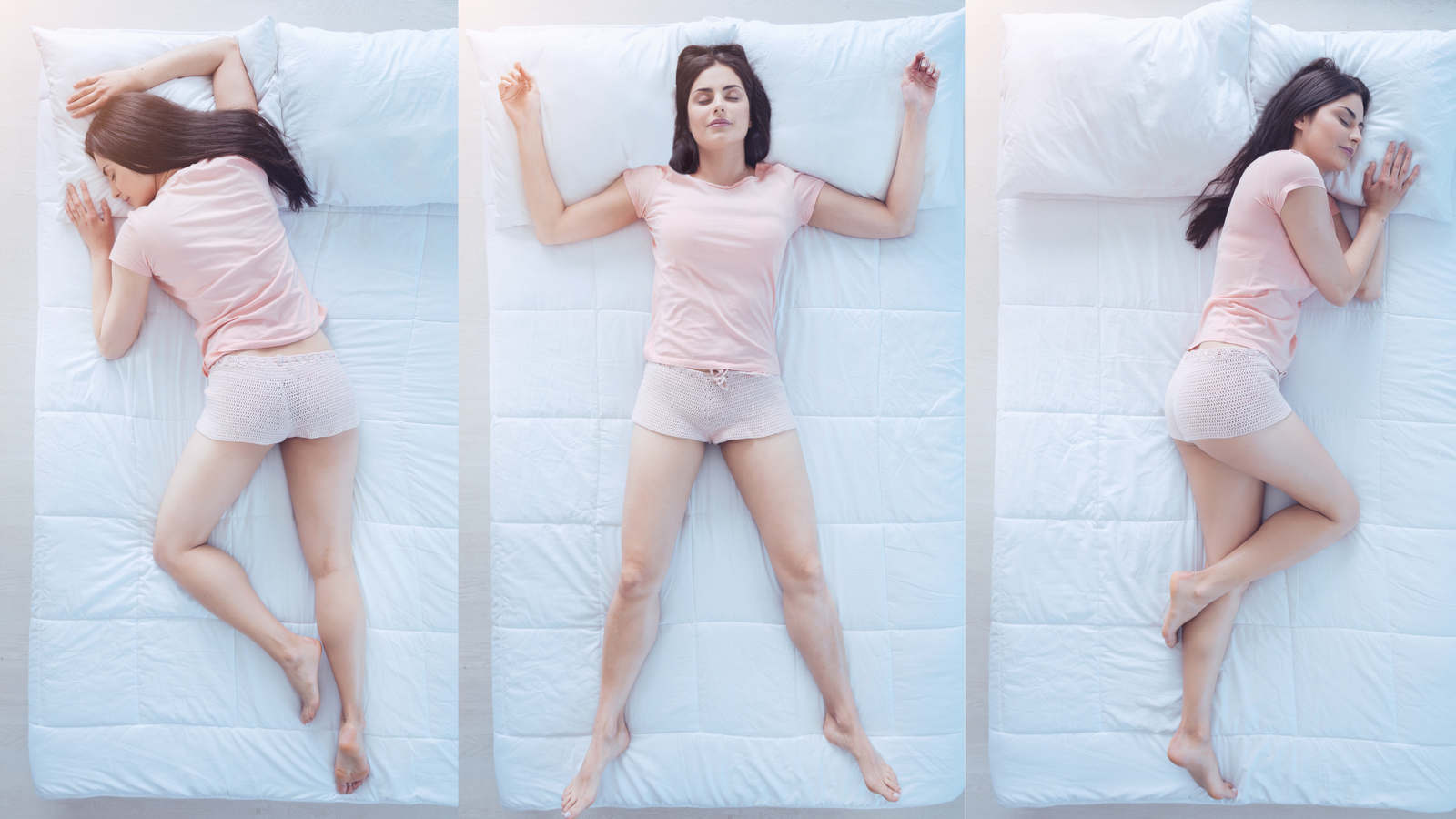Proper Sleeping Postures: A Guide to Healthier Sleep

Sleep is just as vital for good health as diet and exercise. . But despite this fact most of us downplay its crucial role in well-being. Sleeping with not proper posture can cause chronic neck pain, back issues, bad circulation, and will disrupt your sleep cycle. When you are waking up fatigued, in pain or stiff, it may be time to reassess your sleeping position — as well as your sleep surface.
We will be giving you a While there are many benefits of side sleeping let us take you through the most common postures and which they can be better for your body and how the best mattress for side sleepers makes all the difference.
Why Sleeping Posture Matters
Your sleeping position affects how well your spine is aligned, the pressure on your joints and even how well you breathe. Avoid long term orthopedic problems and allow your muscles, tendons, ligaments to fully rest and recover overnight with proper alignment.
When your posture is off—even slightly—it can lead to:
- Back and neck pain.
-
Arms or legs are tingling to sleep.
-
Poor sleep quality and restlessness.
-
Increases pressure on internal organs.
So, by knowing the right and wrong models of sleeping posture, you can completely change your sleep health.
The 3 Main Sleeping Positions: Advantages and Disadvantages
Back Sleeping Position:-
Back Sleeping is when you lie flat on your back with your head, neck, and spine in a straight alignment. This position to sleep is counted as one of the most natural and often recommended by those experts in sleep, especially if you have appropriate support like a pillow and mattress.
Advantages:-
1.Spinal Alignment
Sleeping on your back keeps the head, neck and spine in a neutral position. It helps to distribute body weight evenly, and thus, reduces joint pressure.
2.Reduces Facial Wrinkles
Prevents The Appearance Of Facial Wrinkles Instead of your face being in a pillow or mattress, this reduces the pressure and helps reduce wrinkles.
3.Prevents Acid Reflux (When Elevated)
Sleeping on your back with the head of your bed raised (using a wedge or an adjustable bed) can prevent stomach acid from rising during reflux, which may help reduce symptoms of both acid reflux and heartburn.
.
Disadvantages:-
1.Can Aggravate Snoring and Sleep Apnea
In both supine and side-lying positions the effect of gravity pulling down the tongue and surrounding soft tissues can result in a partial collapse of the airway. Therefore, anyone with obstructive sleep apnea or chronic snoring will not want to depend on sleeping position alone.
2.Lower Back Discomfort
If you do not have proper support (especially with the natural curve in your lower back), lying on your back can definitely lead to or exacerbate lower back pain. Having a mattress that is either too hard or too soft can exacerbate this issue.
3.Not Advised During Pregnancy:-
Pregnant people, especially in the second and third trimester, are advised not to sleep on their back. Engaging this position may also constrict the inferior vena cava (a major blood vessel) will reduce blood supply to fetus & cause faintness or hypotension for the parturient.
Side Sleeping Position:-
Side Sleeping: This is self-explanatory — you sleep on your side, either with legs straight or slightly bent. One of the more common, and regularly suggested positions (especially in individuals 27-55 years old) for its potential health benefits, and ease.
Advantages:-
1.Enhances Digestion and Alleviates Acid Reflux
Improves Digestion and Stops Acid Reflux Laying on your left side while sleeping has been shown to aid digestion and reduce acid reflux symptoms. The position helps to control the digestive tract stomach acid levels, and because of gravity it promotes a lower as well.
2.Improves Circulation
Sleeping on the side, particularly on the left, permits maximum circulation of blood to the heart and the remainder of the body. This is especially beneficial when pregnant as it supports the blood flow for your developing baby
3.Promotes Brain Health
Some research suggests that side sleeping might help the brain more efficiently remove waste, reducing the risk of Alzheimer's and other neurodegenerative diseases.
Disadvantages:-
1.Pressure on Shoulders and Hips
A poorly supportive sleep surface will cause the shoulders and hips to stiffen or hurt. In the long run this can cause areas of these muscles to become painful or pull out of position.
2.Facial Compression and Wrinkle
Sleeping with one side of the face pushed into the pillow for hours can lead to facial wrinkles and skin irritations over time.
3.Numbness or Tingling
Compression of the arm or shoulder under the body may affect blood circulation and can cause numbness, tingling or nerve damage.
Stomach Sleeping Position:-
The prone position applies to the act of sleeping flat on one's belly, typically with one's head turned to one side and the arms looping around or under a pillow. This position is less common than sleeping on one's side or back, but some people find it comfortable or instinctual. Despite the comments above, from a health point of view, stomach sleeping is almost always discouraged by sleep specialists as it is considered to be the worst position.
Advantages:-
1.May Decrease Snoring and Mild Sleep Apnea
For some, sleeping on the stomach may open an airway better than sleeping on the back. This may reduce snoring by preventing the tongue and soft tissues in their throat from falling back.
2.Comfort for Certain Sleepers
Other people find that they experience a greater level of relaxation or comfort when lying face down, which can help them fall asleep initially.
Disadvantages:-
1.Poor Spinal Alignment
Laying on your stomach leads to an unideal position of the spine forcing an exaggerated extension of lower back. With time these misalignments can contribute to lower back pain and stiffness.
2.Neck Strain and Tension
In order to breathe through 1 side, your head must also be rotated to1 side causing the neck to twist for extended periods of time. They will experience potential neck pain, tension headaches and may even face lifelong mobility difficulties.
3.Increased Pressure on Joints and Muscles
Due to prone positioning, the chest, abdomen, and limbs are under pressure, which can cause soreness and numbness and tingling. Over time, muscle imbalances or nerve compression can develop.
The Most Recommended Posture-Side Sleeping Position:-
Experts recommend sleeping on your side, especially your left side as it comes with a number of health benefits:
- Enhances digestion, and prevents acid reflux
- Enhances circulation to the heart
- Helps with sleep apnea and snoring
- Promotes Spinal Alignment (when done correctly)
But the most important factor of having this position work for you is the sleep surface.
 Pro Tips For Better Sleep Posture:-
Pro Tips For Better Sleep Posture:-
-
Use a supportive pillow: Choose a pillow that keeps your neck aligned with your spine. Side sleepers may benefit from firmer, thicker pillows.
-
Use a knee pillow: It helps to prevent unnecessary strain on your hips and lower back.
-
Top Forehead: Ears, Shoulders, Hips all in one line Try not to get in too tight of a fetal position.
-
Test your mattress: A good bed has a shelf life Replace it every 7–10 years, or sooner if you notice sagging.
Conclusion:-
Sleeping properly is not just comfort ideal but it is basically related to your space long term health. If you live with chronic pain, are recovering from an injury or simply want better sleep part two of the daily host's series will share how your position and mattress can affect your health.
For side sleepers, investing in the best mattress for side sleepers isn’t a luxury—it’s a necessity for better sleep, better health, and a better you.



Our families go to store for mattresses and frames
Leave a comment